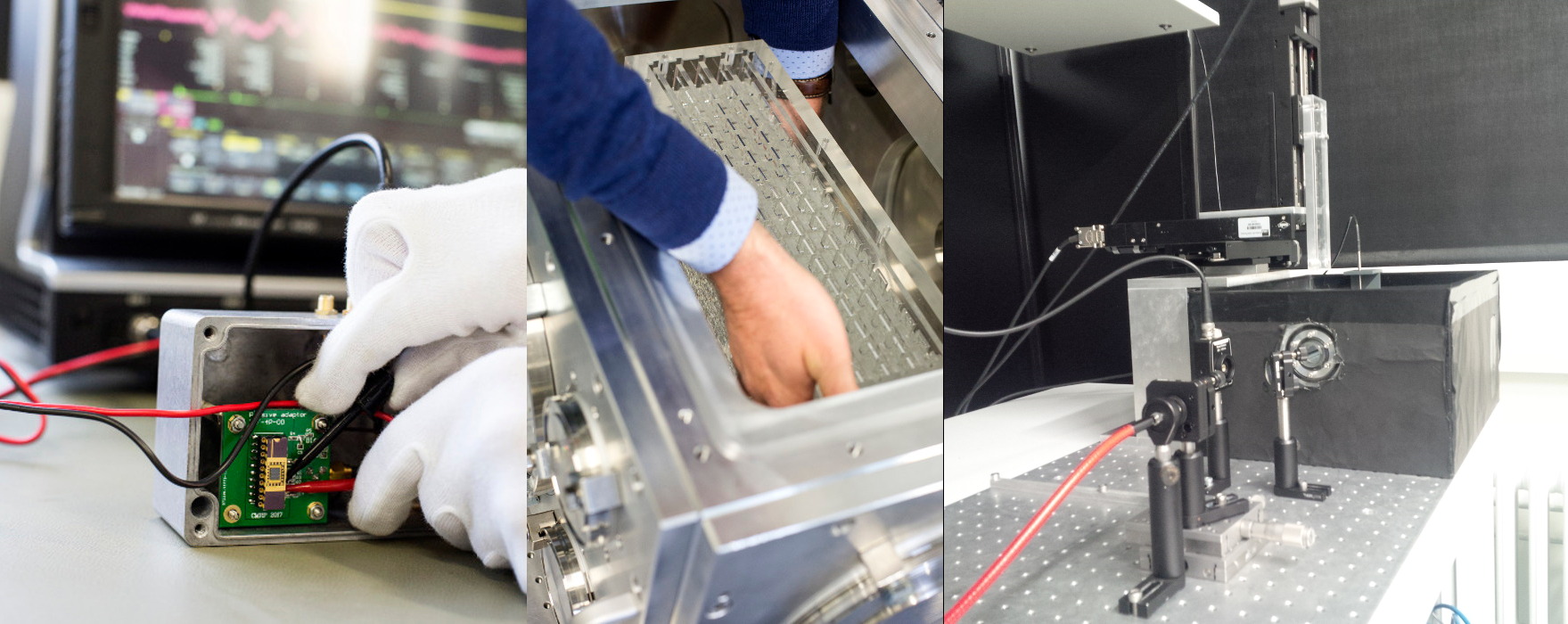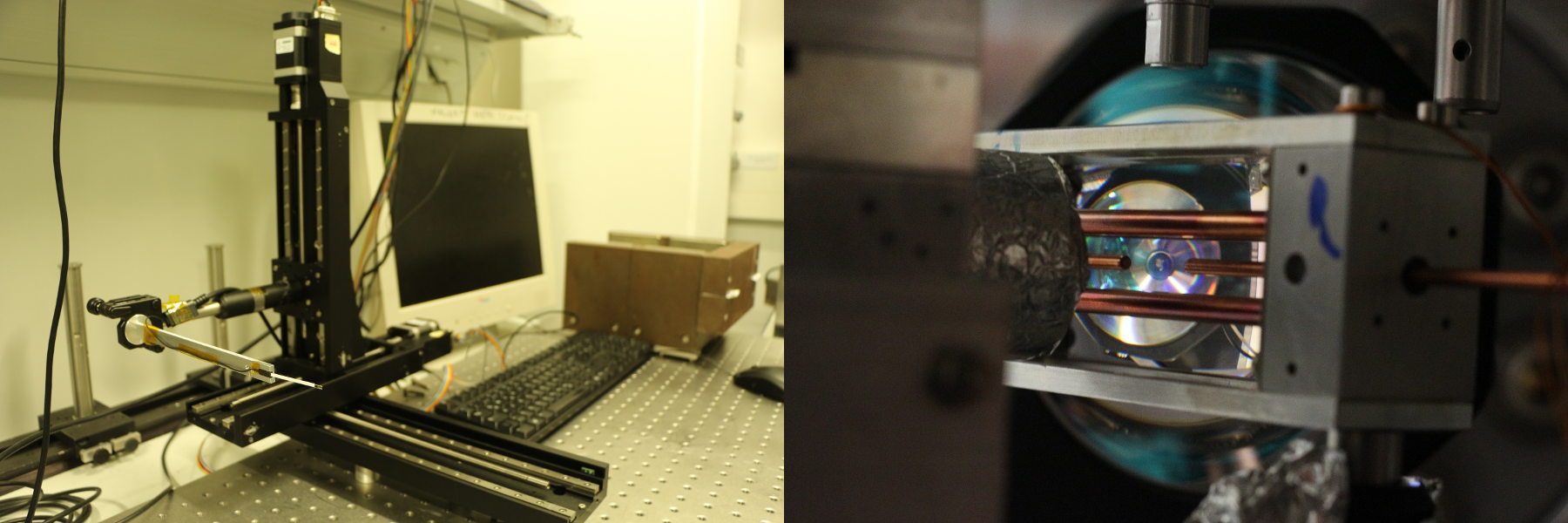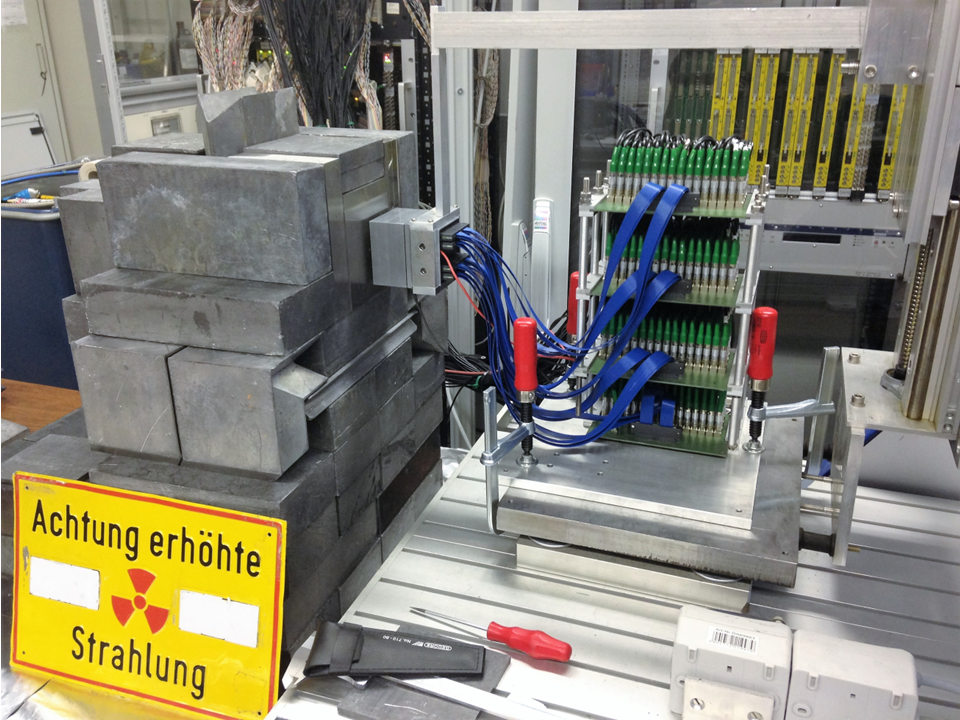Department Labs
We have several in-house laboratories, dedicated to our hardware focused research and development activities such as detector development, range verification using ionoacoustics and prompt gamma emission, MRI imaging and image guidance, development of targetry and instrumentation for laser accelerated ions and the research on a nuclear clock.
The laboratory infrastructure has been renovated during the last years and besides others, a focus has been set on the development of gaseous detectors. A new cleanroom is now available, featuring two areas with increasing cleanliness: The ISO 5 area (old class 100) hosts the material and personnel lock, an ultra-pure water installation, soldering and inspection stations, a fume hood and a large ultrasonic cleaner for detector components. The ISO 3 area (old class 1) is intended for detector assembly and works on open gaseous detectors, hosting a precision granite table.

The cleanroom is complemented by a preparatory laboratory, with access to the ultra-pure water system, a second precision granite table and fume hood.
We are profiting of a fixed gas mixing installation, capable of flexibly mixing noble gases such as Neon, Argon and Krypton with up to four additional quencher gases as Carbon Dioxide or Nitrogen. Wall outlets for the mixed gases are available in the cleanroom facilities and two additional general purpose laboratory rooms.
Equipment for our research on CMOS semiconductor detectors such as readout and trigger electronics, vacuum components and tooling is available in a general purpose laboratory room. We are testing and optimizing sensors, amplifiers and readout electronics for particle range determination using ionoacoustics in a laser-based test stand.

An additional laboratory room is focused on the research related to image guidance and MRI such as e.g. the development of a precise, large-area PMMA and water phantom for MRI scanner calibration.
A laboratory is dedicated to the development and optimization of a Paul trap as positioning system for levitating, isolated microtargets for laser accelerated particle bunches. Further activities concern the characterization of magnetic fields of particle optics elements such as quadrupoles with high precision and testing interferometers for investigations on dynamics induced by energy deposition of short particle bunches in matter.

Compton camera related research on scintillators, semiconductor strip detectors and Silicon Photomultipliers is ongoing in a dedicated laboratory, equipped with the necessary diagnostics, electronics and tooling, including the possibility to work with sealed and calibration radioactive sources, mounted on a scanning system.


